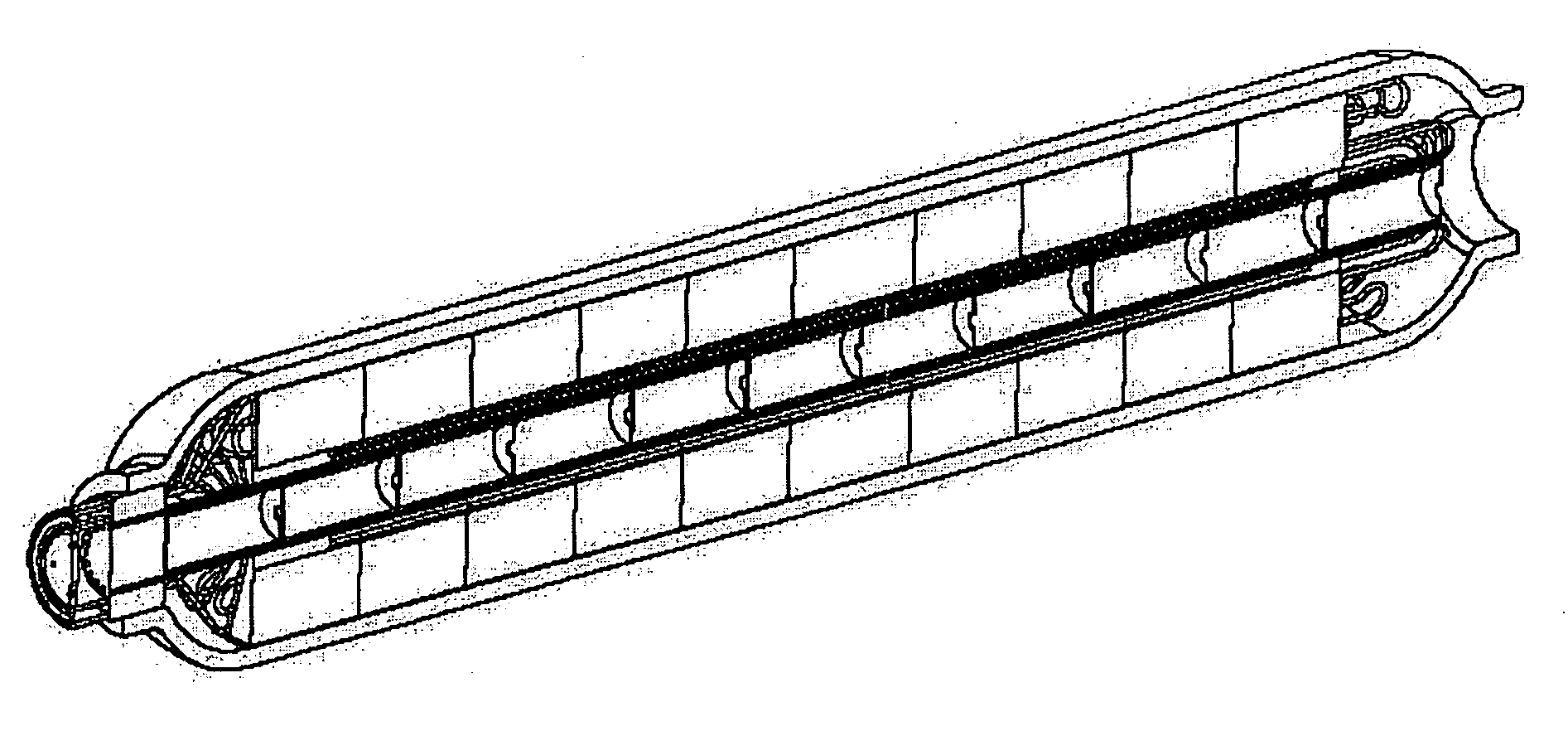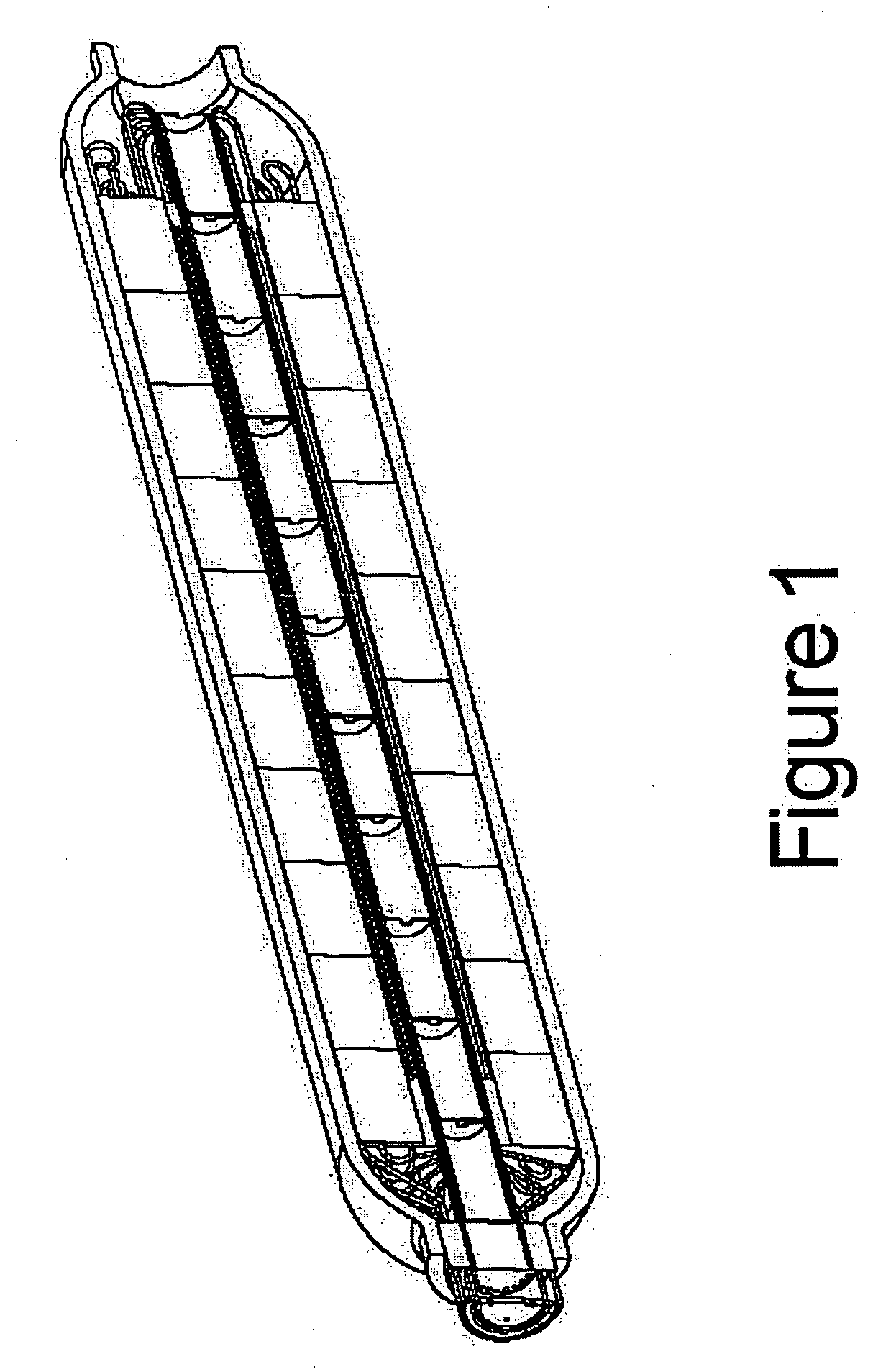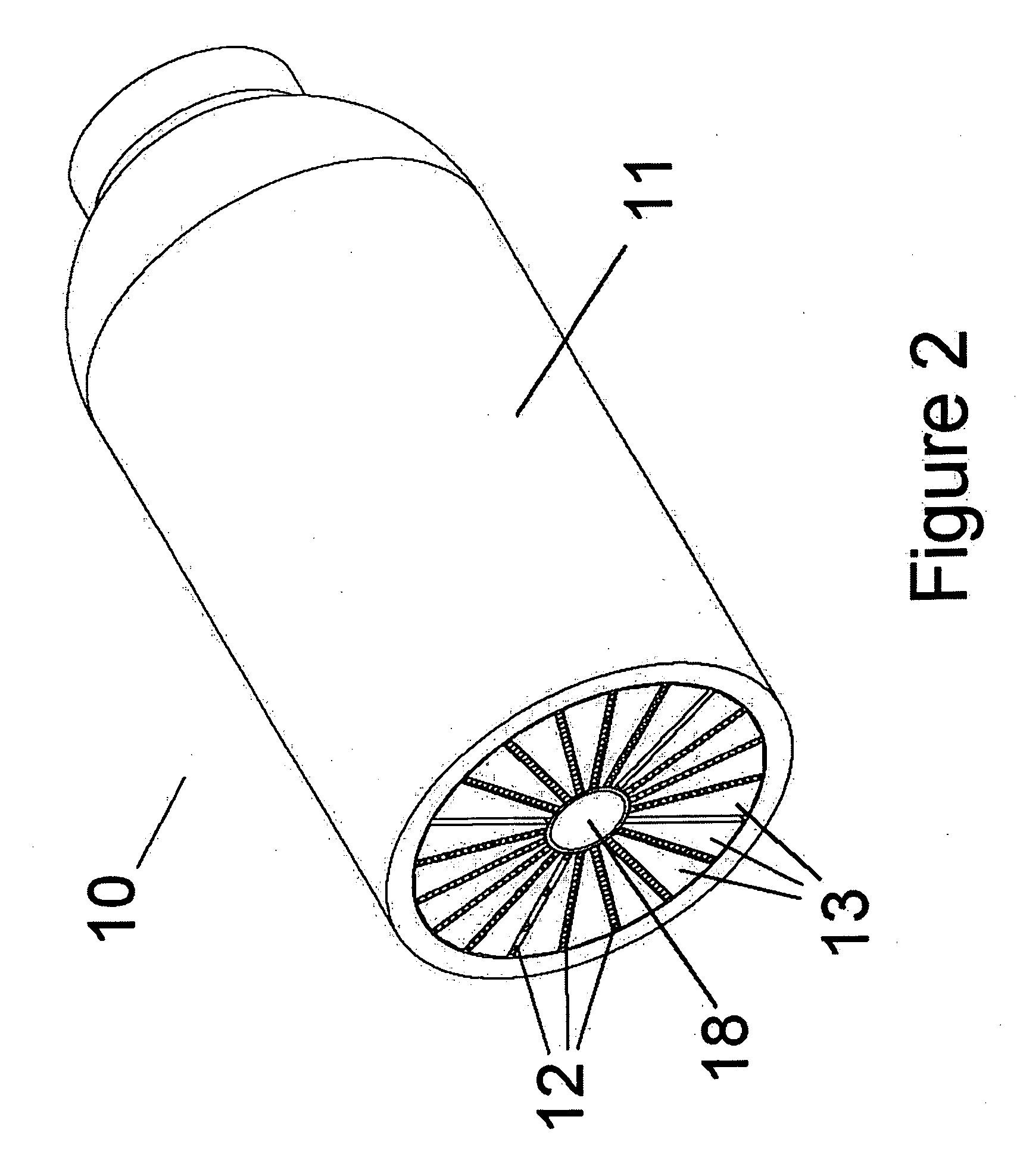Metal hydride hydrogen storage system
a technology of metal hydride and hydrogen storage system, which is applied in the direction of separation process, dispersed particle separation, chemistry apparatus and processes, etc., can solve the problems of lack of acceptable hydrogen storage medium, and inability to meet the needs of hydrogen storag
- Summary
- Abstract
- Description
- Claims
- Application Information
AI Technical Summary
Benefits of technology
Problems solved by technology
Method used
Image
Examples
example
[0046] In this example, a beneficial reduction in stress at the interior wall of a pressure containment vessel of a hydrogen storage unit according to the present invention is demonstrated. The hydrogen storage unit includes a pressure containment vessel having an outside diameter of approximately 3.5 inches and a length of approximately 12 inches. The vessel has a central portion that is cylindrically shaped and upper and lower end portions that are rounded. One of the end portions was equipped with an inlet opening to permit access to the interior of the vessel and to enable the introduction of hydrogen gas into the vessel.
[0047] The interior of the vessel was equipped with radially disposed cells for supporting and housing a hydrogen storage alloy powder. The cells were formed as corrugations in metal disks that were inserted into the vessel with centers aligned along the central longitudinal axis of the vessel. Both ends of each of the radially disposed cells were open to permi...
PUM
| Property | Measurement | Unit |
|---|---|---|
| Fraction | aaaaa | aaaaa |
| Fraction | aaaaa | aaaaa |
| Fraction | aaaaa | aaaaa |
Abstract
Description
Claims
Application Information
 Login to View More
Login to View More - R&D
- Intellectual Property
- Life Sciences
- Materials
- Tech Scout
- Unparalleled Data Quality
- Higher Quality Content
- 60% Fewer Hallucinations
Browse by: Latest US Patents, China's latest patents, Technical Efficacy Thesaurus, Application Domain, Technology Topic, Popular Technical Reports.
© 2025 PatSnap. All rights reserved.Legal|Privacy policy|Modern Slavery Act Transparency Statement|Sitemap|About US| Contact US: help@patsnap.com



